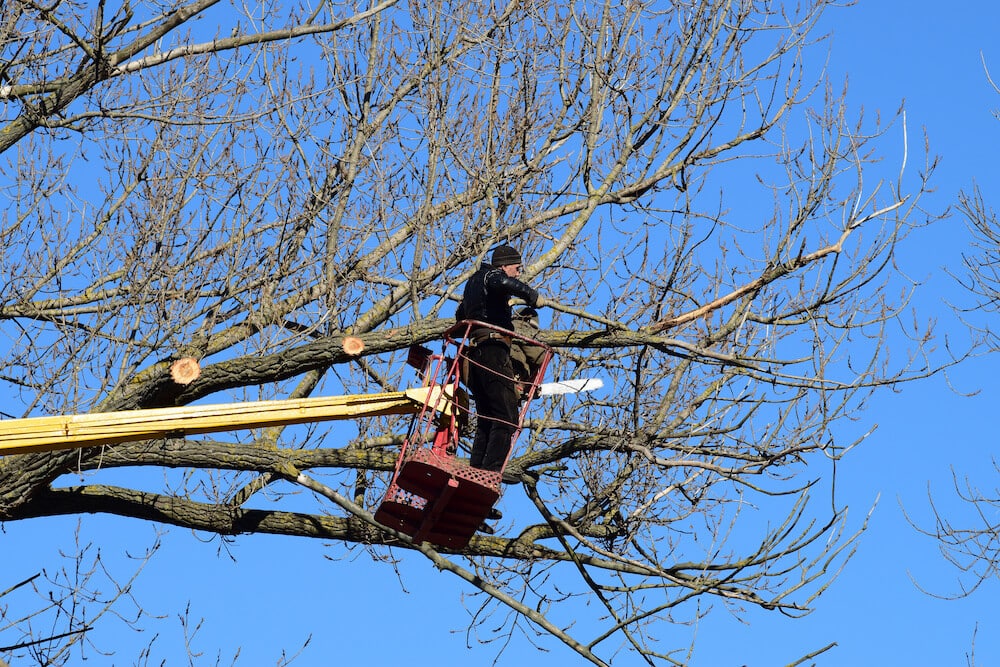
Tree pruning is a vital practice for maintaining the health, safety, and aesthetics of your trees. Understanding the fundamentals of tree pruning can empower homeowners to make informed decisions about their landscape. In this guide, we’ll delve into the importance of tree pruning, techniques, and best practices to ensure your trees thrive for years to come.
Why Prune Trees?
- Health: Pruning helps remove dead, diseased, or damaged branches, preventing decay and improving tree health. This process allows for better air circulation and sunlight penetration, promoting growth and reducing disease risk.
- Safety: Removing weak or overhanging branches can prevent potential hazards, especially during storms. Pruning ensures that branches don’t interfere with power lines, buildings, or pathways. For further reading, you can check OSHA recommendations.
- Aesthetics: Regular pruning shapes trees, enhancing their natural form and beauty. Well-pruned trees contribute to the overall curb appeal of your property.
- Growth Control: Pruning helps manage tree size, preventing overcrowding and ensuring that each tree has enough space to grow. This is particularly important for trees near structures or other plants.
When to Prune Trees
Timing is crucial for effective pruning. While light pruning and the removal of dead wood can be done anytime, most pruning is best done during the dormant season—late fall to early spring. This timing minimizes sap loss and stress on the tree. Additionally, it’s easier to see the tree’s structure without leaves.
Essential Tree Pruning Techniques
- Thinning: This technique involves selectively removing branches to improve light penetration and air circulation within the canopy. Thinning reduces the weight of heavy branches and encourages new growth.
- Raising: Raising involves removing lower branches to provide clearance for pedestrians, vehicles, or buildings. This technique is often used for trees near walkways, driveways, and roads.
- Reduction: Reduction reduces the size of the tree, typically for height control. This method involves cutting back the tree’s height or spread, redirecting growth to lateral branches.
- Cleaning: Cleaning focuses on removing dead, diseased, or damaged branches. This technique improves tree health and appearance by eliminating potential sources of decay and pests.
- Heading: Heading cuts back to a stub, bud, or small lateral branch, stimulating growth in a particular direction. This technique is used to train young trees or manage tree shape.
Best Practices for Tree Pruning
- Use Proper Tools: Invest in high-quality pruning tools like shears, loppers, and saws. Sharp, clean tools make precise cuts, reducing the risk of injury to the tree.
- Make Clean Cuts: Ensure cuts are clean and smooth to promote quick healing. Avoid tearing bark or leaving stubs, which can become entry points for pests and diseases.
- Avoid Over-Pruning: Removing more than 25% of a tree’s foliage in a single year can stress the tree, inhibiting its ability to produce food through photosynthesis.
- Prune at the Right Angle: Make cuts just outside the branch collar—the swollen area where the branch meets the trunk. This allows for proper wound closure and healing.
Benefits of Professional Tree Pruning
While some pruning tasks can be handled by homeowners, certain situations call for professional expertise. Arborists are trained to assess tree health and structure, ensuring that pruning enhances the tree’s longevity and safety. They have the knowledge and equipment to handle large or complex trees, minimizing the risk of damage to the tree or property.
Rancho Landscape & Tree Care: Your Tree Pruning Experts
At Rancho Landscape & Tree Care, we pride ourselves on delivering expert tree pruning services to residents of Southern California. Our team of certified arborists is dedicated to maintaining the health and beauty of your trees. Whether you need routine maintenance or emergency pruning, we’re here to help. Contact us today to schedule a consultation and ensure your trees receive the care they deserve.
